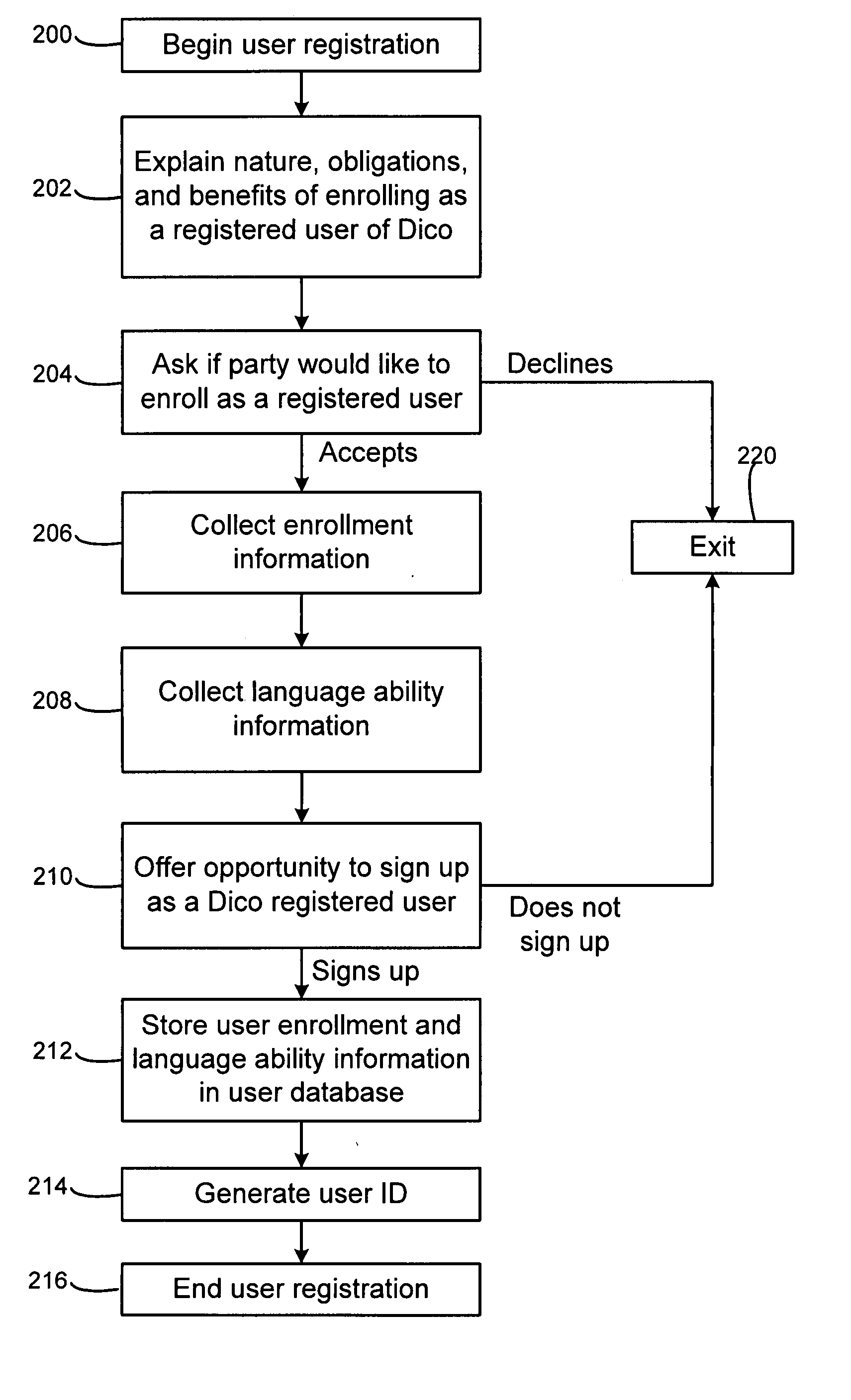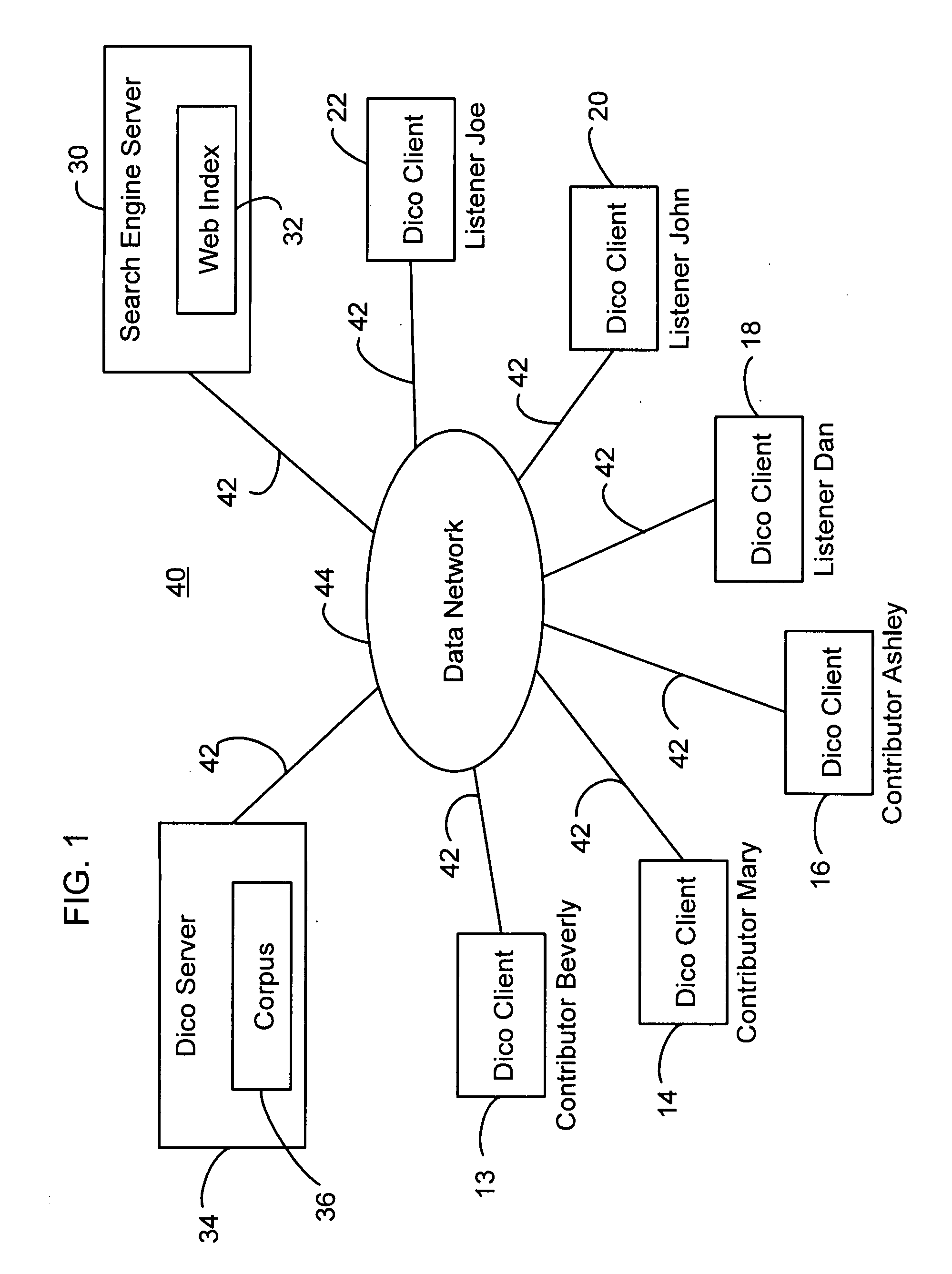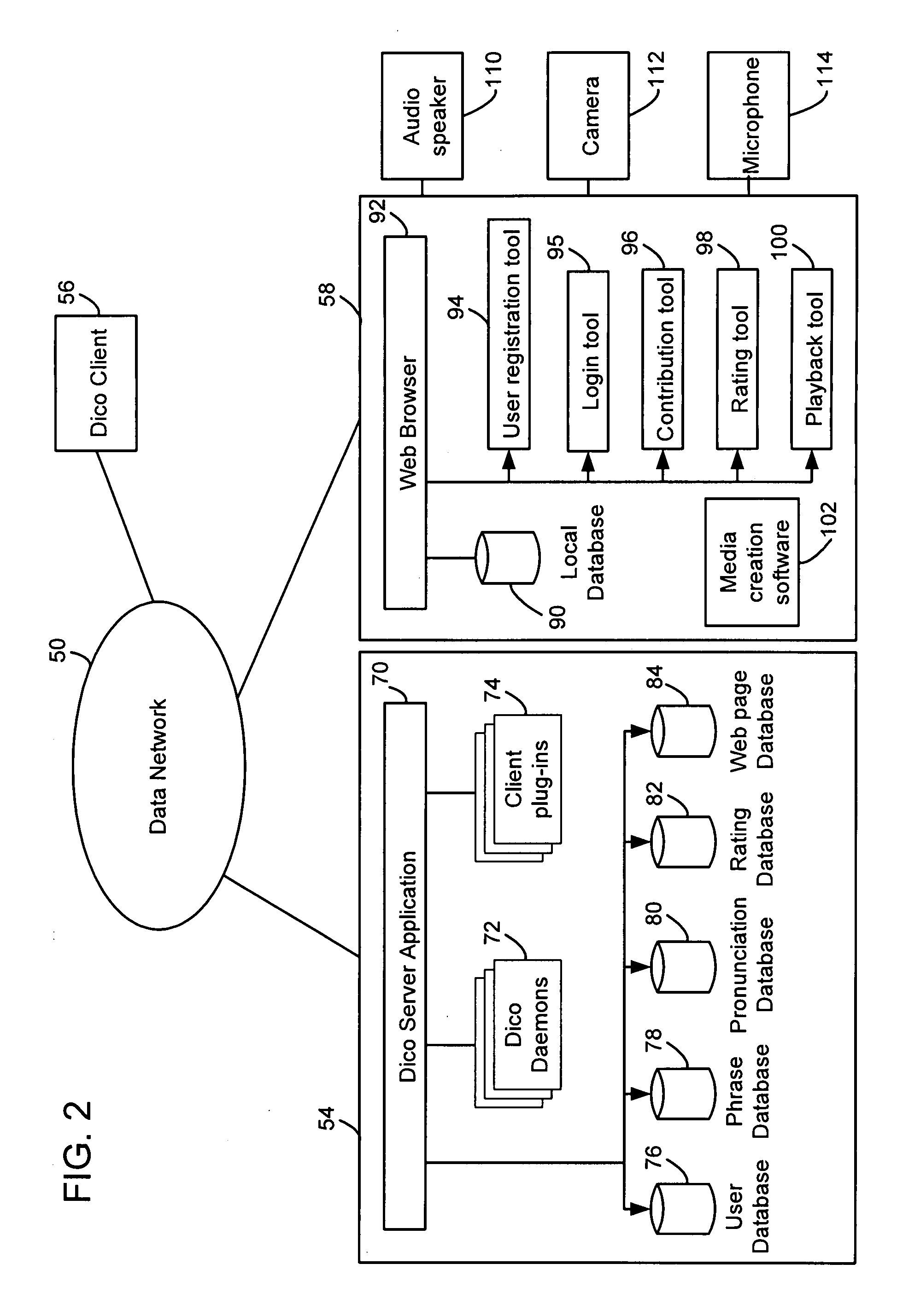Method and System for Generating, Rating, and Storing a Pronunciation Corpus
a technology of pronunciation and corpus, applied in the field of computer methods and systems for generating corpus of pronunciations of words, can solve the problems of not being able to find and learn the pronunciation of all people's interests conveniently, not being able to generate arbitrary and unconventional pronunciations using tts technology, and being difficult or costly to use tts technology to generate arbitrary and unconventional pronunciations. , to achieve the effect of reducing the time it takes for listeners and high quality pronunciations
- Summary
- Abstract
- Description
- Claims
- Application Information
AI Technical Summary
Benefits of technology
Problems solved by technology
Method used
Image
Examples
Embodiment Construction
[0039] In a preferred embodiment, the system 40 for interactively generating a pronunciation corpus is shown in FIG. 1. This system is called the Dico system, or simply as Dico. In this embodiment, Dico is a web application. Web server computer 34 is called the Dico Server. It is interconnected with Dico clients 13, 14, 16, 18, 20, and 22 via data network 44. Users interact with Dico server 34 via web browsers on their client computers 13, 14, 16, 18, 20, and 22. The browsers display web pages served by Dico server 34 and handle communications between client computers 13, 14, 16, 18, 20, and 22 and Dico server 34. Also connected to the data network 44 is a search engine server 30. Data network 44 is preferably a packet-based network. But it may also be a circuit-based network. Examples of packet-based networks are the Internet (both wired and wireless), an intranet, a local area network (“LAN”), and wide area network (“WAN”) using Internet protocols. Examples of circuit-based networ...
PUM
 Login to View More
Login to View More Abstract
Description
Claims
Application Information
 Login to View More
Login to View More - R&D
- Intellectual Property
- Life Sciences
- Materials
- Tech Scout
- Unparalleled Data Quality
- Higher Quality Content
- 60% Fewer Hallucinations
Browse by: Latest US Patents, China's latest patents, Technical Efficacy Thesaurus, Application Domain, Technology Topic, Popular Technical Reports.
© 2025 PatSnap. All rights reserved.Legal|Privacy policy|Modern Slavery Act Transparency Statement|Sitemap|About US| Contact US: help@patsnap.com



